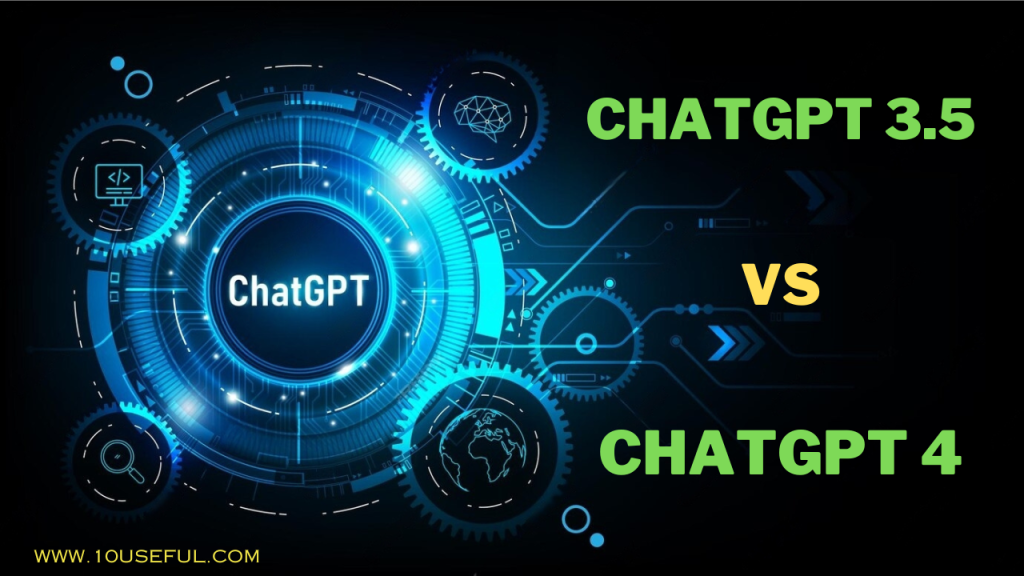Artificial Intelligence (AI) has become an integral part of our daily lives, transforming industries and enhancing human capabilities in unprecedented ways. Among the most remarkable advancements in AI are the Generative Pre-trained Transformers (GPT) developed by OpenAI. These models have revolutionized natural language processing (NLP) by enabling machines to understand and generate human-like text with impressive accuracy and fluency. The evolution from ChatGPT-3.5 to GPT-4 marks a significant leap in this journey. In this article, we will explore the technical differences between ChatGPT-3.5 and GPT-4, highlighting the advancements that make GPT-4 superior and more powerful.
1. Introduction to GPT Models
Before delving into the differences, it’s important to understand the foundation of GPT models. Generative Pre-trained Transformers (GPT) are a series of AI models designed for various NLP tasks such as text generation, translation, summarization, and more. These models are based on the transformer architecture, which was introduced in the paper “Attention is All You Need” by Vaswani et al. (2017). The transformer architecture relies heavily on self-attention mechanisms, allowing the model to weigh the importance of different words in a sentence and capture long-range dependencies.
2. Overview of ChatGPT-3.5
ChatGPT-3.5, a variant of GPT-3, has been a prominent model in the realm of AI due to its extensive training and large-scale capabilities. It is based on the same transformer architecture but is trained with a vast corpus of diverse text data, enabling it to generate coherent and contextually relevant responses. ChatGPT-3.5 boasts 175 billion parameters, making it one of the largest AI language models at its time of release. Despite its impressive performance, there are areas where improvements were necessary, which paved the way for the development of GPT-4.
3. Introducing GPT-4
GPT-4, the latest iteration in the GPT series, brings numerous enhancements and refinements over its predecessors. While the exact parameter count for GPT-4 remains undisclosed, it is expected to be significantly larger than GPT-3.5, leveraging more sophisticated techniques and an expanded dataset. The advancements in GPT-4 can be categorized into several key areas:
3.1. Improved Architecture
GPT-4 introduces architectural improvements that enhance its ability to understand and generate text. One of the notable changes is the implementation of more layers and attention heads, allowing for deeper and more nuanced comprehension of language. The increased depth and complexity enable GPT-4 to capture intricate patterns and relationships within the text, resulting in more accurate and contextually appropriate responses.
3.2. Enhanced Training Data
The quality and diversity of training data play a crucial role in the performance of AI models. GPT-4 benefits from an expanded and more comprehensive dataset compared to GPT-3.5. This dataset includes a wider range of topics, languages, and writing styles, enabling GPT-4 to generate text that is not only more accurate but also more diverse and contextually aware. The inclusion of recent and up-to-date information ensures that GPT-4 remains relevant and capable of addressing contemporary issues.
3.3. Advanced Pre-training Techniques
GPT-4 employs advanced pre-training techniques that improve its language understanding and generation capabilities. One such technique is the use of masked language modeling, where the model learns to predict missing words in a sentence. This approach enhances the model’s ability to understand context and generate coherent text. Additionally, GPT-4 incorporates techniques like contrastive learning and reinforcement learning, which further refine its performance and adaptability.
4. Technical Advancements in GPT-4
4.1. Scaled-up Model Parameters
While the exact number of parameters in GPT-4 has not been disclosed, it is widely believed that the model has significantly more parameters than GPT-3.5. This increase in parameters allows GPT-4 to process and generate text with greater accuracy and detail. The scaled-up parameters enable the model to capture subtle nuances in language, resulting in more precise and contextually relevant responses.
4.2. Improved Fine-tuning and Customization
GPT-4 introduces more advanced fine-tuning capabilities, allowing developers to customize the model for specific applications and domains. This flexibility ensures that GPT-4 can be tailored to meet the unique needs of different industries and use cases. Fine-tuning techniques involve training the model on specific datasets and tasks, enabling it to perform exceptionally well in specialized areas such as legal document analysis, medical diagnostics, and customer support.
4.3. Better Handling of Ambiguity and Context
One of the challenges in natural language processing is handling ambiguity and context effectively. GPT-4 addresses this challenge by incorporating improved context-aware mechanisms. The model can better understand and disambiguate sentences with multiple meanings, ensuring that the generated text is accurate and contextually appropriate. This enhancement is particularly valuable in applications like chatbots and virtual assistants, where precise and relevant responses are crucial.
5. Real-world Applications and Impact
The advancements in GPT-4 have a profound impact on various real-world applications, enhancing their performance and capabilities. Here are some key areas where GPT-4 excels:
5.1. Natural Language Understanding and Generation
GPT-4’s improved language understanding and generation capabilities make it a powerful tool for applications like automated content creation, translation, and summarization. The model can generate high-quality text that is coherent, contextually accurate, and engaging. This is particularly useful for content creators, marketers, and businesses looking to automate content generation while maintaining quality.
5.2. Conversational AI and Chatbots
Chatbots and virtual assistants benefit greatly from GPT-4’s advancements. The model’s ability to understand and generate contextually relevant responses ensures more natural and human-like interactions. GPT-4 can handle complex queries, provide accurate information, and engage users in meaningful conversations. This improvement enhances customer support, virtual assistance, and other conversational AI applications.
5.3. Domain-specific Applications
GPT-4’s advanced fine-tuning capabilities enable it to excel in domain-specific applications. For instance, in the medical field, GPT-4 can assist in diagnosing conditions, recommending treatments, and generating medical reports. In the legal industry, the model can analyze legal documents, provide case summaries, and assist with legal research. The adaptability of GPT-4 ensures that it can be effectively utilized in various specialized domains.
6. Ethical Considerations and Challenges
While GPT-4 offers numerous benefits, it also raises important ethical considerations and challenges that must be addressed. The increased capabilities of GPT-4 bring forth concerns related to bias, misinformation, and misuse. Ensuring that the model is used responsibly and ethically is crucial to mitigate these risks.
6.1. Bias and Fairness
AI models, including GPT-4, can inadvertently perpetuate biases present in the training data. It is essential to implement measures that detect and mitigate biases to ensure fair and unbiased outcomes. This includes diverse and representative training data, rigorous testing, and continuous monitoring to identify and address potential biases.
6.2. Misinformation and Reliability
The ability of GPT-4 to generate human-like text raises concerns about the spread of misinformation. Ensuring the accuracy and reliability of the generated content is paramount. Implementing verification mechanisms, fact-checking, and transparency in AI-generated content can help address these concerns and promote the responsible use of the technology.
6.3. Security and Misuse
The advanced capabilities of GPT-4 can also be exploited for malicious purposes, such as generating fake news, phishing attacks, and other forms of cybercrime. Developing robust security measures and guidelines for responsible use is essential to prevent misuse and protect against potential threats.
7. Conclusion
The transition from ChatGPT-3.5 to GPT-4 represents a significant leap in AI language model technology. With its improved architecture, enhanced training data, advanced pre-training techniques, and better handling of ambiguity and context, GPT-4 offers superior performance and capabilities. These advancements have a profound impact on various real-world applications, from natural language understanding and generation to conversational AI and domain-specific tasks.
However, with these advancements come important ethical considerations and challenges that must be addressed to ensure the responsible and ethical use of AI technology. As we continue to explore the potential of GPT-4 and beyond, it is crucial to prioritize fairness, accuracy, reliability, and security to harness the full potential of AI while mitigating its risks.
In summary, GPT-4 marks a new era in AI language models, pushing the boundaries of what is possible and paving the way for more advanced and sophisticated AI applications. As we move forward, the continued evolution of AI will undoubtedly bring even more exciting developments, transforming the way we interact with technology and each other.

